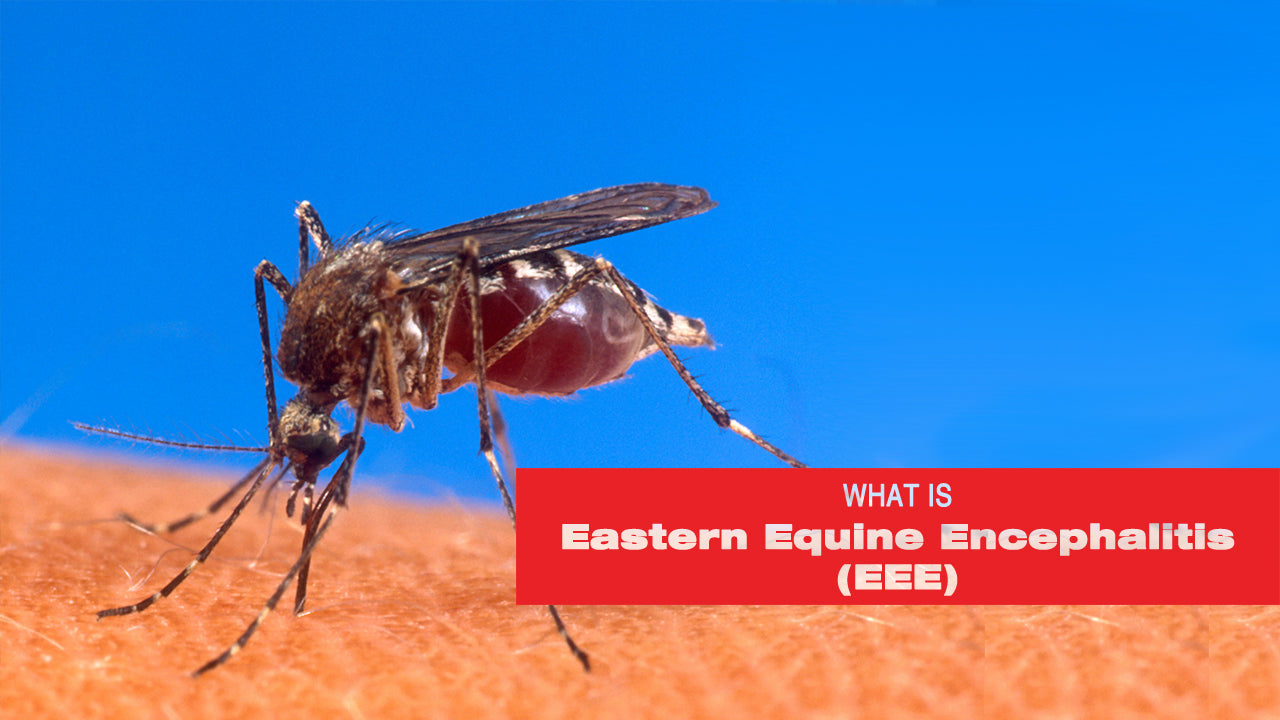What Is Eastern Equine Encephalitis (EEE)?
Eastern equine encephalitis (EEE) or commonly reffered to as "Triple E" is an extremely rare but severe and often fatal infection that causes inflammation of the brain. Besides humans, the virus can also infect a wide range of animals, including other mammals, reptiles, amphibians, and birds.
Infected mosquitoes often transmit the EEE virus.
What are the Symptoms of Eastern Equine Encephalitis (EEE)?
While some people may not show any signs of an EEEV infection, most people will notice sudden headaches, high fever, chills, and vomiting within 4-10 days after being bitten by an infected mosquito.
The symptoms also depend on the age of the infected person. People below the age of 15 and above the age of 50 are at a greater risk of developing severe symptoms of the disease. In severe cases, the seemingly normal symptoms may progress into seizures, disorientation, encephalitis, and even coma.
Numbers show approximately a third of the patients infected by EEEV die, while others who survive suffer from mild to severe damage to the brain.
How Does Eastern Equine Encephalitis (EEE) Spread?
The EEE virus is usually spread by the Culiseta melanura species of mosquitos and birds through a natural cycle.
However, in some cases, an infected mosquito can spread the virus to humans and other animals. This happens when one mosquito species like Aedes, Culex, and Coquillettidia, that feed on both birds and mammals contracts the virus and transfers it to the mammal through a bite.
Even so, EEE does not spread from person-to-person, animals to people, or even people to animals.
EEE Affected Regions in the United States
Since its first case in the US in 2009, EEE has been mostly reported in Florida (13), Massachusetts (10), New York (8), Michigan (7), North Caroline (7), and Georgia (6).
Yet it’s important to remember the EEEV transmission occurs in and around cedar and hardwood swamp areas. Therefore, the freshwater hardwood swamps in the Atlantic, Gulf Coast states, and the Great Lakes region are highly likely to have the infected mosquitoes and must be avoided.
How many cases in the United States in 2019?
On average, 7 human cases of EEE are reported annually in the United States. However, last year (as of October 15, 2019), a total of 34 cases were reported by 7 states. Massachusetts reported the highest number of cases.
How to avoid it and protect yourself
Since there is no vaccine for EEE, it’s best to avoid the infected mosquitoes in the first place.
Some ways to protect yourself from mosquito bites include
- Dressing in long sleeves and pants tucked into socks or boots.
- Avoid applying repellents near eyes, nose, or mouth. Use sparingly around the ears.
- Wash the treated skin with soap and water as soon as you get back inside.
- In the case of children, apply the repellent onto their exposed skin yourself. Don’t use it on their hands because they might touch their face or other sensitive areas without knowing. Wash their skin or give them a bath when they get back inside.
Also, ensure you keep your house and its surroundings free from mosquitoes by
- Disposing water-holding containers like cans, pots, plastic containers, etc.
- Removing or recycling discarded tires on the property since they are an important breeding site for mosquitoes.
- Drilling holes in the bottoms of the recycling containers kept outdoors.
- Ensuring roof gutters drain properly and cleaning the clogged gutters in spring and fall.
To learn more, you can follow our guide on how to eliminate mosquitoes in your backyard.
Should I See a Doctor?
It is best to visit the doctor if
- You live in one of the affected areas or areas likely to be affected (for example, areas near hardwood swamps)
- You observe more than 2 clinical symptoms of EEE (seek immediate help in case of severe symptoms)
- You notice any of the EEE symptoms lasting for more than 3 days
For more information on other mosquito borne diseases and illnesses, read our guide about other common mosquito-borne diseases in the United States.











